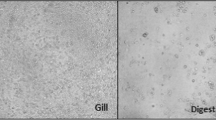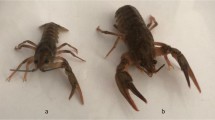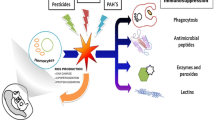Abstract
The ubiquitous use of antibiotics leads exposure of these chemicals on non-target aquatic species, while the toxicity assays for these chemicals are time/labor consuming and expensive. Alternative approaches using primary cell cultures which retain the tissue functionality at its highest form have received global attention compared to cell lines. In the current study, the cytotoxic effects of two commonly used antibiotics from amphenicol (florfenicol) and macrolide (erythromycin) groups were evaluated on primary cell cultures of Unio crassus (mantle, digestive gland, gill, and gonad) and Cyprinus carpio (gill and liver) using MTT and Neutral Red assays. The highest cytotoxic effects were found on the mussel digestive gland and carp liver cells for florfenicol and erythromycin, while the lowest cytotoxic effects were found in mussel mantle cells for both drugs in the MTT test. In the NR test, the highest cytotoxic effects of erythromycin and florfenicol were found in the mussel gill, mantle, gonad, and carp gill cells; the lowest cytotoxic effect of erythromycin was found in the mussel digestive gland, while the lowest effect of florfenicol was found in the carp liver cells. The cytotoxicity of florfenicol was quite low for the carp liver, while the cytotoxicity of erythromycin was quite low in the mussel digestive tract. Thus, it was concluded that cells made from mussel tissues could be used in ecotoxicity tests, and sensitivity may vary according to the tissue.






Similar content being viewed by others
Data availability
Research data are not shared.
References
Arslan P, Yurdakok-Dikmen B, Kuzukiran O, Ozeren SC, Filazi A (2021) Effects of acetamiprid and flumethrin on Unio sp. primary cells. Biologia 76(4):1359–1365
Balbi T, Ciacci C, Grasselli E, Smerilli A, Voci A, Canesi L (2017) Utilization of Mytilus digestive gland cells for the in vitro screening of potential metabolic disruptors in aquatic invertebrates. Comp Biochem Physiol C: Toxicol Pharmacol 191:26–35. https://doi.org/10.1016/j.cbpc.2016.08.009
Besse JP, Garric J (2008) Human pharmaceuticals in surface waters: implementation of a prioritization methodology and application to the French situation. Toxicol Lett 176(2):104–123. https://doi.org/10.1016/j.toxlet.2007.10.012
Birmelin C, Pipe RK, Goldfarb PS, Livingstone DR (1999) Primary cell-culture of the digestive gland of the marine mussel Mytilus edulis: a time-course study of antioxidant-and biotransformation-enzyme activity and ultrastructural changes. Mar Biol 135(1):65–75. https://doi.org/10.1007/s002270050602
Bojarski B, Jakubiak M, Bień M, Batoryna M, Formicki G, Socha M, Drąg-Kozak E, Tombarkiewicz B (2019) Assessment of gentamicin effect on oxidoreductive balance and microstructure of trunk kidney in Prussian carp (Carassius gibelio). Ann Wars Univ Life Sci Sggw Anim Sci 58:115–111
Bojarski B, Kot B, Witeska M (2020) Antibacterials in aquatic environment and their toxicity to fish. Pharmaceuticals 13(8):189
Caminada D, Escher C, Fent K (2006) Cytotoxicity of pharmaceuticals found in aquatic systems: comparison of PLHC-1 and RTG-2 fish cell lines. Aquat Toxicol 79(2):114–123. https://doi.org/10.1016/j.aquatox.2006.05.010
Castaño, A., Bols, N., Braunbeck, T., Dierickx, P., Halder, M., Isomaa, B., ... & Repetto, G. (2003) The use of fish cells in ecotoxicology: the report and recommendations of ECVAM Workshop 47. Alternat Lab Anim 31(3):317-351. https://doi.org/10.1177/026119290303100314
Chen H, Liu S, Xu XR, Liu SS, Zhou GJ, Sun KF, Zhao JL, Ying GG (2015) Antibiotics in typical marine aquaculture farms surrounding Hailing Island, South China: occurrence, bioaccumulation and human dietary exposure. Mar Pollut Bull 90(1-2):181–187. https://doi.org/10.1016/j.marpolbul.2014.10.053
Chen L, Li H, Liu Y, Cui Y, Li Y, Yang Z (2020) Distribution, residue level, sources, and phase partition of antibiotics in surface sediments from the inland river: a case study of the Xiangjiang River, south-central China. Environ Sci Pollut Res 27(2):2273–2286. https://doi.org/10.1007/s11356-019-06833-0
Daugavet MA, Blinova MI (2015) Culture of mussel (Mytiuls edulis L.) mantle cells. Cell Tissue Biol 9(3):233–243. https://doi.org/10.1134/S1990519X15030037
Dayeh VR, Schirmer K, Bols NC (2002) Applying whole-water samples directly to fish cell cultures in order to evaluate the toxicity of industrial effluent. Water Res 36(15):3727–3738. https://doi.org/10.1016/S0043-1354(02)00078-7
Du J, Zhao H, Liu S, Xie H, Wang Y, Chen J (2017) Antibiotics in the coastal water of the South Yellow Sea in China: occurrence, distribution and ecological risks. Sci Total Environ 595:521–527. https://doi.org/10.1016/j.scitotenv.2017.03.281
ECVAM (2014) E. EURL ECVAM status report on the development, validation and regulatory acceptance of alternative methods and approaches (2013-April 2014), EURL ECVAM. https://ec.europa.eu/jrc/en/publication/eur-scientific-and-technical-research-reports/eurl-ecvam-status-report-development-validation-andregulatory-acceptance-alternative-0
Faucet J, Maurice M, Gagnaire B, Renault T, Burgeot T (2004) Isolation and primary culture of gill and digestive gland cells from the common mussel Mytilus edulis. Methods Cell Sci 25(3-4):177–184
Fent K, Bätscher R (2000) Cytochrome P4501A induction potencies of polycyclic aromatic hydrocarbons in a fish hepatoma cell line: demonstration of additive interactions. Environ Toxicol Chem: Int J 19(8):2047–2058. https://doi.org/10.1002/etc.5620190813
Fernández C, Carbonell G, Babín M (2013) Effects of individual and a mixture of pharmaceuticals and personal-care products on cytotoxicity, EROD activity and ROS production in a rainbow trout gonadal cell line (RTG-2). J Appl Toxicol 33(11):1203–1212. https://doi.org/10.1002/jat.2752
Ferreira CSG, Nunes BA, de Melo Henriques-Almeida JM, Guilhermino L (2007) Acute toxicity of oxytetracycline and florfenicol to the microalgae Tetraselmis chuii and to the crustacean Artemia parthenogenetica. Ecotoxicol Environ Saf 67(3):452–458. https://doi.org/10.1016/j.ecoenv.2006.10.006
Fonte E, Ferreira P, Guilhermino L (2016) Temperature rise and microplastics interact with the toxicity of the antibiotic cefalexin to juveniles of the common goby (Pomatoschistus microps): post-exposure predatory behaviour, acetylcholinesterase activity and lipid peroxidation. Aquat Toxicol 180:173–185. https://doi.org/10.1016/j.aquatox.2016.09.015
Galgani F, Chiffoleau JF, Gall PL, Pichot Y, Andral B, Martin C (2005) Deep-sea caging of the mussel Mytilus galloprovincialis: Potential application in ecotoxicological studies. Chem Ecol 21(2):133–141. https://doi.org/10.1080/02757540500093048
Guilhermino L, Vieira LR, Ribeiro D, Tavares AS, Cardoso V, Alves A, Almeida JM (2018) Uptake and effects of the antimicrobial florfenicol, microplastics and their mixtures on freshwater exotic invasive bivalve Corbicula fluminea. Sci Total Environ 622:1131–1142. https://doi.org/10.1016/j.scitotenv.2017.12.020
Halling-Sørensen B, Nielsen SN, Lanzky PF, Ingerslev F, Lützhøft HH, Jørgensen SE (1998) Occurrence, fate and effects of pharmaceutical substances in the environment-a review. Chemosphere 36(2):357–393. https://doi.org/10.1016/S0045-6535(97)00354-8
Hernroth B, Baden S, Tassidis H, Hörnaeus K, Guillemant J, Lind SB, Bergquist J (2016) Impact of ocean acidification on antimicrobial activity in gills of the blue mussel (Mytilus edulis). Fish Shellfish Immunol 55:452–459. https://doi.org/10.1016/j.fsi.2016.04.007
Kim Y, Jung J, Kim M, Park J, Boxall AB, Choi K (2008) Prioritizing veterinary pharmaceuticals for aquatic environment in Korea. Environ Toxicol Pharmacol 26(2):167–176. https://doi.org/10.1016/j.etap.2008.03.006
Kondera E, Bojarski B, Ługowska K, Kot B, Witeska M (2020) Effects of oxytetracycline and gentamicin therapeutic doses on hematological, biochemical and hematopoietic parameters in Cyprinus carpio Juveniles. Animals 10(12):2278
Ku CC, Chen SN (1992) Characterization of three cell lines derived from color carp Cyprinus carpio. J Tissue Cult Methods 14(2):63–71
Le Bris H, Pouliquen H (2004) Experimental study on the bioaccumulation of oxytetracycline and oxolinic acid by the blue mussel (Mytilus edulis). An evaluation of its ability to bio-monitor antibiotics in the marine environment. Mar Pollut Bull 48(5-6):434–440. https://doi.org/10.1016/j.marpolbul.2003.08.018
Le Pennec G, Le Pennec M (2001) Evaluation of the toxicity of chemical compounds using digestive acini of the bivalve mollusc Pecten maximus L. maintained alive in vitro. Aquat Toxicol 53(1):1–7. https://doi.org/10.1016/S0166-445X(00)00163-6
Livingstone DR (1994) Recent developments in marine invertebrate organic xenobiotic metabolism. Toxicol Ecotoxicol News 1(3):88–94
Manzetti S, Ghisi R (2014) The environmental release and fate of antibiotics. Mar Pollut Bull 79(1-2):7–15. https://doi.org/10.1016/j.marpolbul.2014.01.005
Martins A, Guimarães L, Guilhermino L (2013) Chronic toxicity of the veterinary antibiotic florfenicol to Daphnia magna assessed at two temperatures. Environ Toxicol Pharmacol 36(3):1022–1032. https://doi.org/10.1016/j.etap.2013.09.001
Moore MN, Livingstone DR, Donkin P, Bayne BL, Widdows J, Lowe DM (1980) Mixed function oxygenases and xenobiotic detoxication/toxication systems in bivalve molluscs. Helgoländer Meeresun 33(1):278–291
Oehlmann J, Schulte-Oehlmann U, Kloas W, Jagnytsch O, Lutz I, Kusk KO, Wollenberger L, Santos EM, Paull GC, van Look KJW, Tyler CR (2009) A critical analysis of the biological impacts of plasticizers on wildlife. Philos Transact R Soc B: Biol Sci 364(1526):2047–2062. https://doi.org/10.1098/rstb.2008.0242
Peek K, Gabbott PA (1989) Adipogranular cells from the mantle tissue of Mytilus edulis LI Isolation, purification and biochemical characteristics of dispersed cells. J Exp Mar Biol Ecol 126(3):203–216. https://doi.org/10.1016/0022-0981(89)90187-1
Repetto G, Del Peso A, Zurita JL (2008) Neutral red uptake assay for the estimation of cell viability/cytotoxicity. Nat Protoc 3(7):1125–1131
Revel M, Roman C, Châtel A (2021) Is cell culture a suitable tool for the evaluation of micro-and nanoplastics ecotoxicity? Ecotoxicology 30: 421–430. https://doi.org/10.1007/s10646-021-02355-z
Samuelsen OB, Bergh Ø (2004) Efficacy of orally administered florfenicol and oxolinic acid for the treatment of vibriosis in cod (Gadus morhua). Aquaculture 235(1-4):27–35. https://doi.org/10.1016/S0044-8486(03)00446-0
Schafhauser BH, Kristofco LA, de Oliveira CMR, Brooks BW (2018) Global review and analysis of erythromycin in the environment: occurrence, bioaccumulation and antibiotic resistance hazards. Environ Pollut 238:440–451. https://doi.org/10.1016/j.envpol.2018.03.052
Schnell S, Bols NC, Barata C, Porte C (2009) Single and combined toxicity of pharmaceuticals and personal care products (PPCPs) on the rainbow trout liver cell line RTL-W1. Aquat Toxicol 93(4):244–252. https://doi.org/10.1016/j.aquatox.2009.05.007
Tanneberger K, Knöbel M, Busser FJ, Sinnige TL, Hermens JL, Schirmer K (2013) Predicting fish acute toxicity using a fish gill cell line-based toxicity assay. Environ Sci Technol 47(2):1110–1119. https://doi.org/10.1021/es303505z
Tatoj K, Ćmiel AM, Kwaśna D, Lipińska AM, Zając K, Zając T (2017) The endangered thick-shelled river mussel (Unio crassus): a new host species for the European bitterling (Rhodeus amarus). Biodivers Conserv 26(5):1217–1224. https://doi.org/10.1007/s10531-017-1295-y
Tran NH, Chen H, Reinhard M, Mao F, Gin KYH (2016) Occurrence and removal of multiple classes of antibiotics and antimicrobial agents in biological wastewater treatment processes. Water Res 104:461–472. https://doi.org/10.1016/j.watres.2016.08.040
Vilizzi L, Tarkan AS, Copp GH (2015) Experimental evidence from causal criteria analysis for the effects of common carp Cyprinus carpio on freshwater ecosystems: a global perspective. Rev Fish Sci Aquacult 23(3):253–290. https://doi.org/10.1080/23308249.2015.1051214
Wei R, Ge F, Chen M, Wang R (2012) Occurrence of ciprofloxacin, enrofloxacin, and florfenicol in animal wastewater and water resources. J Environ Qual 41(5):1481–1486. https://doi.org/10.2134/jeq2012.0014
Wolfe D, Schorr M, Hanson M, Nelson CH, Richards SM (2015) Hazard assessment for a pharmaceutical mixture detected in the upper Tennessee River using Daphnia magna. Global J Environ Sci Manag 1(1):1–14. https://doi.org/10.7508/GJESM.2015.01.001
Yang LH, Ying GG, Su HC, Stauber JL, Adams MS, Binet MT (2008) Growth-inhibiting effects of 12 antibacterial agents and their mixtures on the freshwater microalga pseudokirchneriella subcapitata. Environ Toxicol Chem: Int J 27(5):1201–1208. https://doi.org/10.1897/07-471.1
Yanhong F, Chenghua H, Guofang L, Haibin Z (2008) Optimization of the isolation and cultivation of Cyprinus carpio primary hepatocytes. Cytotechnology 58(2):85–92. https://doi.org/10.1007/s10616-008-9169-5
Yoshino TP, Bickham U, Bayne CJ (2013) Molluscan cells in culture: primary cell cultures and cell lines. Can J Zool 91(6):391–404. https://doi.org/10.1139/cjz-2012-0258
Yurdakok-Dikmen B, Alpay M, Kismali G, Filazi A, Kuzukiran O, Sireli UT (2015) In vitro effects of phthalate mixtures on colorectal adenocarcinoma cell lines. J Environ Pathol Toxicol Oncol 34(2):115–123. https://doi.org/10.1615/JEnvironPatholToxicolOncol.2015013256
Yurdakök-Dikmen B, Arslan P, Kuzukıran Ö, Filazi A, Erkoç F (2018) Unio sp. primary cell culture potential in ecotoxicology research. Toxin Rev 37(1):75–81. https://doi.org/10.1080/15569543.2017.1331360
Zettler ML, Jueg U (2007) The situation of the freshwater mussel Unio crassus (Philipsson, 1788) in north-east Germany and its monitoring in terms of the EC Habitats Directive. Mollusca 25(2):165–174
Zhou LJ, Ying GG, Liu S, Zhang RQ, Lai HJ, Chen ZF, Pan CG (2013a) Excretion masses and environmental occurrence of antibiotics in typical swine and dairy cattle farms in China. Sci Total Environ 444:183–195. https://doi.org/10.1016/j.scitotenv.2012.11.087
Zhou LJ, Ying GG, Liu S, Zhao JL, Yang B, Chen ZF, Lai HJ (2013b) Occurrence and fate of eleven classes of antibiotics in two typical wastewater treatment plants in South China. Sci Total Environ 452:365–376. https://doi.org/10.1016/j.scitotenv.2013.03.010
Zounková R, Klimešová Z, Nepejchalová L, Hilscherová K, Bláha L (2011) Complex evaluation of ecotoxicity and genotoxicity of antimicrobials oxytetracycline and flumequine used in aquaculture. Environ Toxicol Chem 30(5):1184–1189. https://doi.org/10.1002/etc.486
Code availability
Not applicable
Funding
This study was supported by the Faculty of Veterinary Medicine in Ankara University. Pınar Arslan was supported by TÜBİTAK under the 2211- National Ph.D. Fellowship Programme 2015/1.
Author information
Authors and Affiliations
Contributions
PA, BYD, SCO, and OK performed the measurements, AF, PA, and BYD were involved in the planning and supervised the work; SCO and OK processed the experimental data, performed the analysis, drafted the manuscript, and designed the figures. OK and BYD performed the calculations. PA and SCO manufactured the samples; AF aided in interpreting the results and worked on the manuscript. All the authors discussed the results and commented on the manuscript.
Corresponding author
Ethics declarations
Ethics approval
The study was done in accordance with internationally accepted principles for laboratory animal use and care that followed the Local Ethics Committee of Experimental Animals (Decision Number: 2017-10-87, Date: 10 May 2017).
Consent to participate
Not applicable
Consent for publication
Not applicable
Conflict of interest
The authors declare no competing interests.
Additional information
Responsible Editor: Bruno Nunes
Publisher’s note
Springer Nature remains neutral with regard to jurisdictional claims in published maps and institutional affiliations.
Rights and permissions
About this article
Cite this article
Arslan, P., Yurdakok-Dikmen, B., Ozeren, S.C. et al. In vitro effects of erythromycin and florfenicol on primary cell lines of Unio crassus and Cyprinus carpio. Environ Sci Pollut Res 28, 48408–48416 (2021). https://doi.org/10.1007/s11356-021-14139-3
Received:
Accepted:
Published:
Issue Date:
DOI: https://doi.org/10.1007/s11356-021-14139-3




